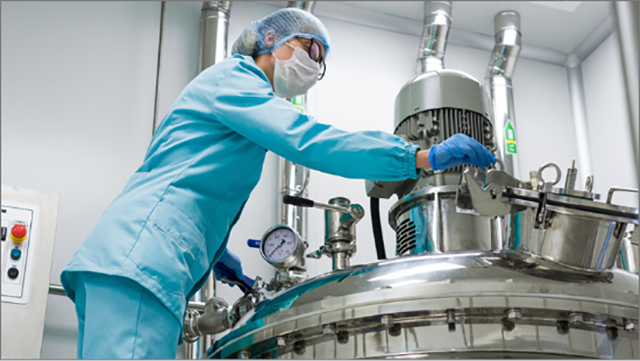
Asset utilization refers to how effectively and efficiently your organization is using equipment. It’s a great way to measure whether you’re getting the value out of your assets – -as well as the costs, time, and effort you’re expending to maintain those assets. That’s why knowing your asset utilization is so important. Physical assets are expensive, so getting the most out of each asset is key. Understanding your actual asset utilization can help you gain insight into your efficiency (and how to improve it).
Why Asset Utilization Matters in Plant Maintenance
In a manufacturing setting, physical capital is expensive. To get the most out of your investment, you need to make sure your assets are running optimally and that you’re avoiding unexpected breakdowns and unplanned downtime.
While no asset can run at full capacity 24/7 and 365 days per year, assets that experience extended downtime or are otherwise frequently idle likely aren’t delivering the value you need from your investment.
To understand your asset utilization, you must start by calculating the annual planned downtime for each asset across your facility. Then, take into account any production time that you lose each year due to holidays, seasonal fluctuations, inactive time, unexpected breakdowns, and anything else that results in downtime.
Quality losses also need to be factored into the equation. You’ll want to document wasted parts and quantify them in terms of production hours lost producing these defective, unsaleable parts. Once you understand all of the losses you’re sustaining, it’s time to add them up and subtract the resulting number of hours from the total number of hours in a year.
How to Calculate Your Asset Utilization
The most basic asset utilization metric takes your total losses in hours and subtracts those losses from the total number of hours in a year (8,760). That is, your max possible asset utilization for each asset is 8,760 hours in a year period. If an asset experiences a total of 2,803 idle hours in that year period, that means, your asset utilization is 68%. That is, your asset is in use 68% of the time. In general, asset utilization scores below 70% can indicate that you’re not getting the necessary value from that asset to justify its cost.
While asset utilization is a helpful metric, it should be paired with other KPIs to gain a clear understanding of where, how, and why losses are occurring (and more importantly, how to fix them). These metrics include Product Yield, Overall Equipment Effectiveness (OEE), Unplanned Downtime, and Maintenance Spend. See how to calculate these metrics below:
Product Yield
This equation has three variables: Number of planned units (P), percentage of functional units in a batch (G), and percentage of subpar units in a batch (R).
Y = P*G + P*(1-G)*R
Overall Equipment Effectiveness (OEE)
Overall Equipment Effectiveness (OEE) evaluates how effectively your equipment is running by measuring equipment against three factors: Availability, Performance, and Quality.
- Availability: How long was the process actually running relative to the planned production time? Were there any planned and/or unplanned stops? An availability score of 100% means the machine ran continuously throughout the planned production time without stopping at all.
- Performance: How fast is the process relative to your ideal cycle time? Was the process slowed down by any slow cycles or small stops? A performance score of 100% means the process ran as fast as possible relative to its ideal cycle time.
- Quality: Were there any production defects? Did any parts require rework? A quality score of 100% means there were no defects in any parts produced.
Each of the individual scores above then rolls up into the overall OEE score, which takes into account the losses experienced in each area. An OEE score of 100% means that the machine ran as fast as possible, with no downtime, and no defects.
Unplanned Downtime
Unplanned downtime happens when an asset is shut down unexpectedly, typically due to equipment failure. Unplanned downtime can become extended when maintenance teams don’t have the inventory or resources on hand to repair the problem quickly.
Understanding the total duration of unplanned downtime for each asset can help you pinpoint root causes and find the best solution. For example, you might consider implementing 24/7 condition monitoring and a predictive maintenance approach for critical assets that are experiencing excessive unplanned downtime. You may also want to adopt a connected reliability framework that integrates those sensors and software with CMMS and other business systems. You might also keep extra spare parts in inventory for parts that fail frequently and lead to lengthy downtime, and leverage a CMMS to automate your spare parts inventory management.
Maintenance Spend
Finally, you need to understand what you’re spending on maintenance for each asset. Older assets often cost more and more to maintain as they age, so tracking your maintenance costs can help you determine when it’s more cost-effective to retire and replace an asset vs. continue to repair it.
Improve Your Asset Utilization KPIs with a CMMS
These KPIs will help you get to the bottom of under-utilization, and start getting more from your assets. You can also use these metrics to quickly identify assets running below their expected capacity, so the issues can be diagnosed and resolved before they lead to more production losses.
While managing all of this might seem overwhelming, a CMMS like eMaint makes it easy to track the right KPIs, manage asset lifecycles, automate your inventory management, prioritize work orders, streamline your preventive maintenance activities, and more.

